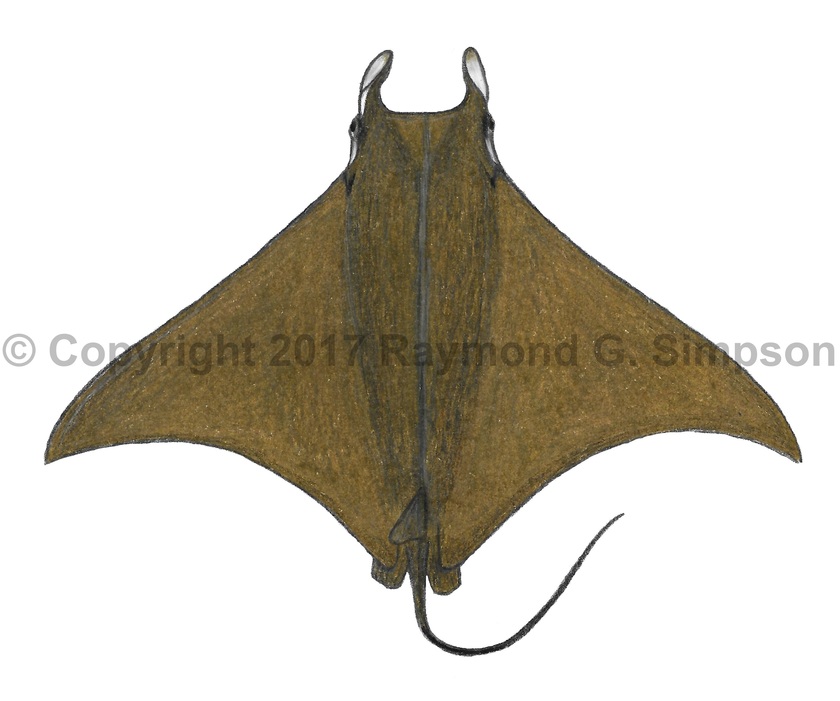
Common Name
Sicklefin Mobula
Year Described
Philippi, 1892
Identification
Disk large and more elongated than other genus members. Head relatively small and significantly protruding (long neck). Body ridge down back. Mouth wide and subterminal. Teeth present on both jaws. Tooth bands ~70% of mouth width. Cephalic lobes prominent. Trunk thick with well developed ventral gill slits. Eyes on side of head. Spiracles above pectoral origin. Pectoral fins extremely angular with pointed tips. Anterior disk margin slightly undulate. Posterior disk margin strongly concave. Tail relatively short. Tail spine absent. Dorsal fin single and triangular on base of tail. Pelvic fins small. Skin with dense denticles.
Color
Dorsum gray-brown to golden brown. Usually unmarked. Side of head white except for area around eye. Cephalic lobes white with black tips. Dorsal fin without a white tip. Ventrum white with gray markings on the posterior margin of disk and around mouth and trunk.
Size
Maximum size to over 3.7m wide. Adults mature at about 2.3-2.5m. Juveniles born at around 105-140cm.
Habitat
Pelagic near surface in both offshore and inshore waters.
Range
Known from scattered records off Venezuela, the Gulf of Mexico, and off eastern Brazil (including oceanic islands).
References
Childs, J. 1997. Range extension of Mobula tarapacana into the northwestern Gulf of Mexico. Gulf of Mexico Science, 15(1), 5.
Gadig, O.B.F. & C.L.S. Sampaio. 2002. Ocorrência de Mobula japanica no Atlântico ocidental e Mobula tarapacana em águas brasileiras, com comentários sobre a diversidade de raias-manta (Chondrichthyes: Mobulidae) no Brasil. Arquivo de Ciências do Mar. Fortaleza, v. 35. n. 1-2, p.33-37. 2002.
Last, P.R., White, W.T., Carvalho, M.R. de, Séret, B., Stehmann, M.F.W & Naylor, G.J.P (Eds.). 2016. Rays of the World. CSIRO Publishing, Melbourne. 790p.